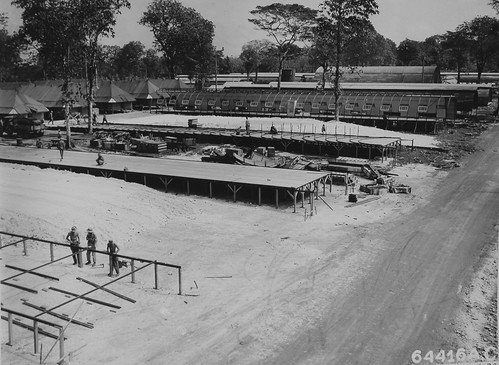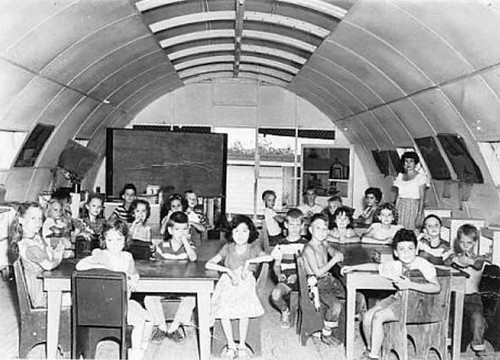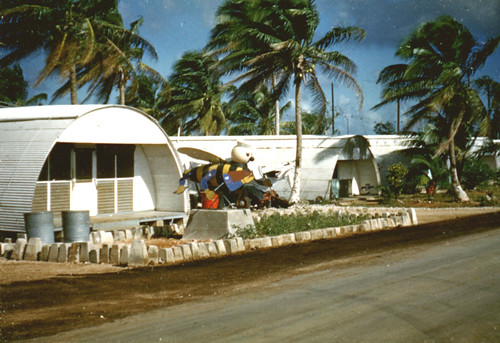Quonset Huts
Temporary buildings used post World War II
A Quonset hut is a lightweight prefabricated structure of corrugated steel having a semicircular cross section. Following the retaking of Guam by the United States during World War II, construction began in earnest to transform the island into a military stronghold capable of striking the Japanese mainland. Temporary buildings were needed to house the massive influx of troops and supplies. During the post-war reconstruction, Quonset huts became omnipresent on Guam.
Favored by the Navy because of its low cost and ease of both construction and transportation, Quonset huts became the predominant building structures, numbering in the thousands. No skilled labor was needed to construct the prefabricated, corrugated tin sheeting. With an average size of sixteen feet by thirty-six feet and an eight-foot radius, the temporary structures eventually came to be used for non-military functions as homes, schools, and hospitals. There was also a larger size called elephant Quonsets.
The immediate post-war period featured an acute building and infrastructure shortage.This was due to prior under development of the island before World War II and the military strategy in recapturing the island of wide-scale bombing of buildings took place in an effort to minimize infantry casualties. Further destruction took place at the hands of the Navy Seabees who bulldozed buildings and homes in preparation for the construction of planned harbors and airfields.
In the short-term, the Quonset huts were well suited to the tropical climate. The curved shape aided in resisting wind forces as evidenced by the large number of Quonset huts left standing after Supertyphoon Karen in 1962. The lack of overhangs allows for the wind to blow over smoothly.
The high maintenance of the large number of Quonset huts on Guam, however, led to a decline in popularity. The shape that aided the Quonset during typhoons made it hard to build against or add on to because of its lack of a vertical surface. The structures became notorious for the unbearable heat that would accumulate inside. Corrosion became problematic as the heavy rains weakened the tin walls. Tin is also susceptible to impact from flying debris during typhoons. On average, the Quonset huts had a fifty-year life on Guam. There are only a few left standing today.
For further reading
Rogers, Robert. Destiny’s Landfall: A History of Guam. Honolulu: University of Hawai`i Press, 1995.
Ruth, H. Mark, Jack B. Jones, and Morris M. Grobins, eds. Guidebook to the Architecture of Guam. Taipei: Guam and the TTPI Chapter of the American Institute of Architects, 1976.




